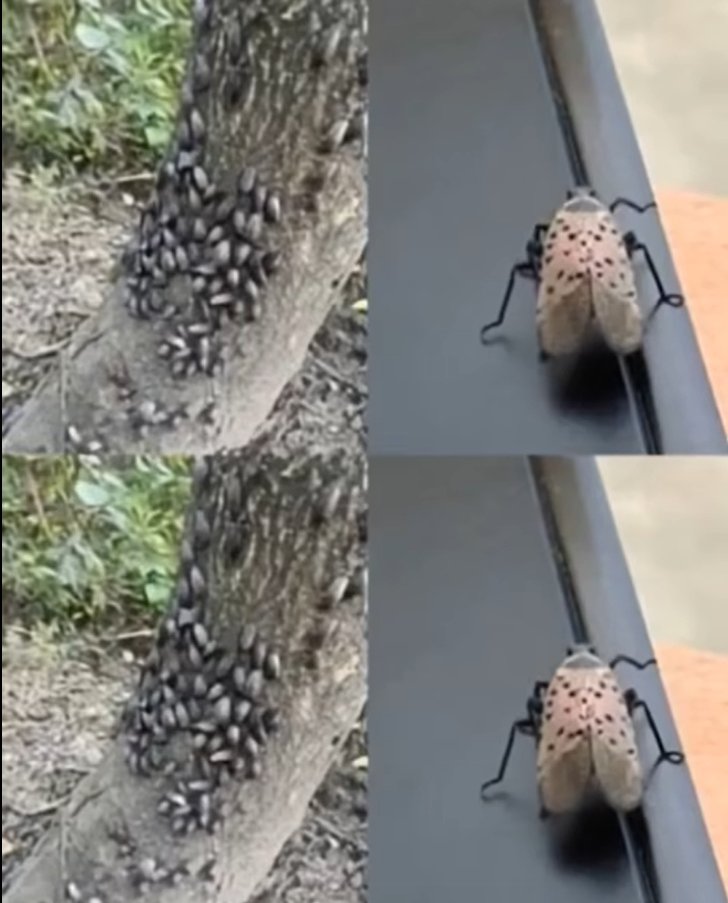The spotted lanternfly (Lycorma delicatula) is an invasive insect from Asia that threatens U.S. ecosystems
and agriculture. First found in Pennsylvania in 2014, it’s now spread across multiple states, damaging trees, crops, and plants.
Lanternflies feed by piercing plants and sucking out sap, weakening them and leaving them vulnerable to disease.
They also secrete a sticky honeydew that fosters sooty mold—a fungus that blocks sunlight and hinders photosynthesis.
Easily identified, adult lanternflies have gray wings with black spots and striking red underwings.
Nymphs start black with white dots, then turn red as they mature.
They target hardwood trees (like maples), fruit trees (such as grapes and pears), and crops like hops, draining plants of energy
and reducing growth—especially in vineyards. Beyond farms, they harm ornamental trees and disrupt ecosystems by outcompeting native species.
What to do if you see one:
Kill it — squash adults and nymphs.
Destroy eggs — scrape off masses into alcohol or sanitizer.
Report it — contact local agriculture departments.
Inspect outdoor items — especially before travel.
Stopping this pest starts with individual action. If you see a lanternfly, act fast to protect your environment.
